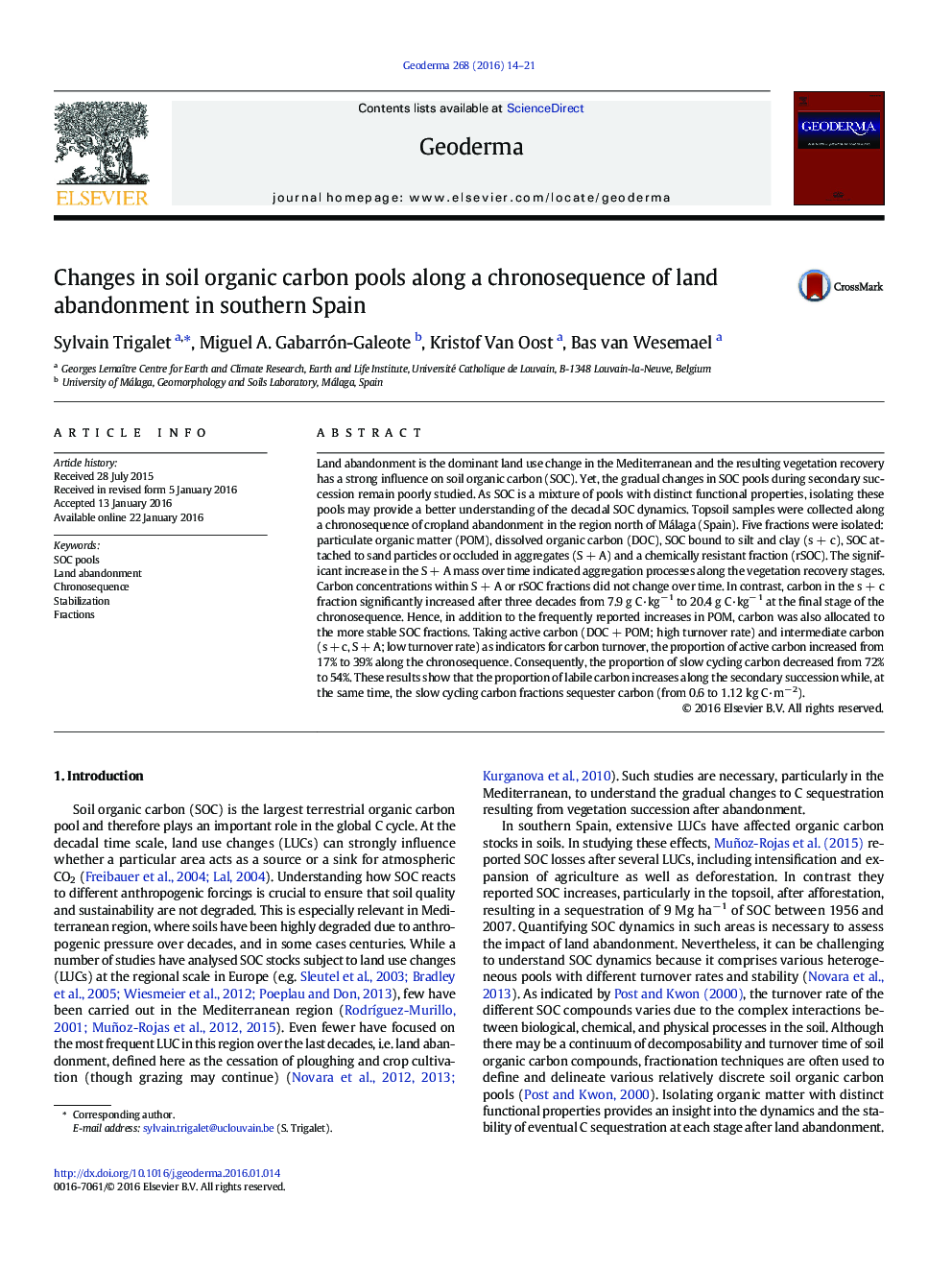| کد مقاله | کد نشریه | سال انتشار | مقاله انگلیسی | نسخه تمام متن |
|---|---|---|---|---|
| 4573022 | 1629449 | 2016 | 8 صفحه PDF | دانلود رایگان |
• SOC changes within fractions have different temporal trends after land abandonment.
• POM was the most sensitive fraction and quickly adapted to the level OM input from the vegetation.
• Land abandonment does not only trigger addition of labile carbon into the soil but also sequestration of stable SOC.
Land abandonment is the dominant land use change in the Mediterranean and the resulting vegetation recovery has a strong influence on soil organic carbon (SOC). Yet, the gradual changes in SOC pools during secondary succession remain poorly studied. As SOC is a mixture of pools with distinct functional properties, isolating these pools may provide a better understanding of the decadal SOC dynamics. Topsoil samples were collected along a chronosequence of cropland abandonment in the region north of Málaga (Spain). Five fractions were isolated: particulate organic matter (POM), dissolved organic carbon (DOC), SOC bound to silt and clay (s + c), SOC attached to sand particles or occluded in aggregates (S + A) and a chemically resistant fraction (rSOC). The significant increase in the S + A mass over time indicated aggregation processes along the vegetation recovery stages. Carbon concentrations within S + A or rSOC fractions did not change over time. In contrast, carbon in the s + c fraction significantly increased after three decades from 7.9 g C·kg− 1 to 20.4 g C·kg− 1 at the final stage of the chronosequence. Hence, in addition to the frequently reported increases in POM, carbon was also allocated to the more stable SOC fractions. Taking active carbon (DOC + POM; high turnover rate) and intermediate carbon (s + c, S + A; low turnover rate) as indicators for carbon turnover, the proportion of active carbon increased from 17% to 39% along the chronosequence. Consequently, the proportion of slow cycling carbon decreased from 72% to 54%. These results show that the proportion of labile carbon increases along the secondary succession while, at the same time, the slow cycling carbon fractions sequester carbon (from 0.6 to 1.12 kg C·m− 2).
Journal: Geoderma - Volume 268, 15 April 2016, Pages 14–21
